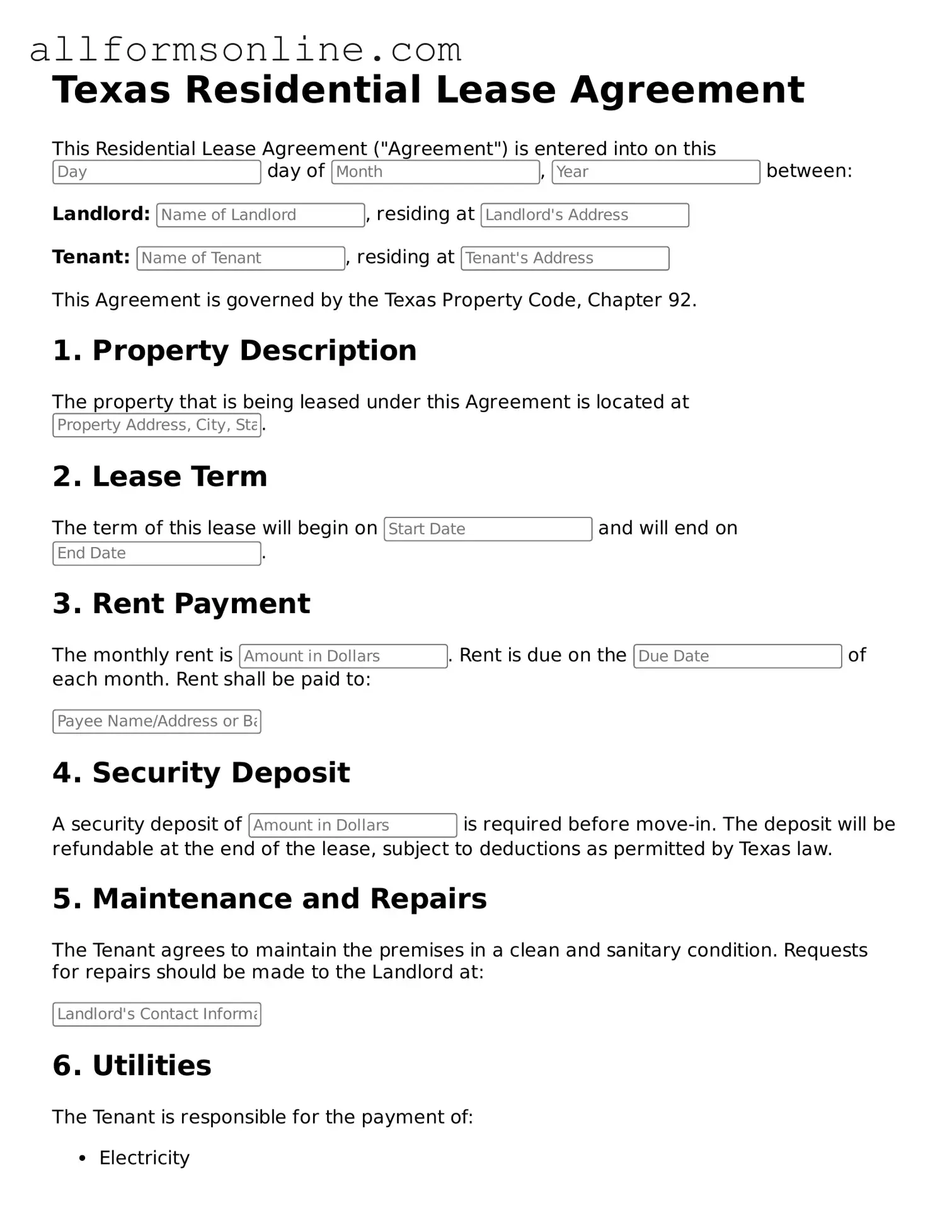What is a Texas Residential Lease Agreement?
A Texas Residential Lease Agreement is a legally binding contract between a landlord and a tenant. It outlines the terms and conditions under which a tenant can occupy a rental property. This agreement typically includes details about the rental amount, duration of the lease, security deposits, maintenance responsibilities, and other important rules that both parties must follow.
What should be included in a Texas Residential Lease Agreement?
Essential components of a Texas Residential Lease Agreement include the names of the landlord and tenant, the property address, the lease term (start and end dates), the monthly rent amount, payment methods, security deposit details, and rules regarding pets, smoking, and property maintenance. It’s also wise to include information about late fees, eviction procedures, and any specific clauses that pertain to the property.
How long does a Texas Residential Lease Agreement last?
The duration of a Texas Residential Lease Agreement can vary. Most commonly, leases are for one year, but they can also be month-to-month or for a shorter or longer period depending on the agreement between the landlord and tenant. It’s important for both parties to understand the lease duration, as it impacts their rights and responsibilities.
Can a Texas Residential Lease Agreement be modified?
Yes, a Texas Residential Lease Agreement can be modified, but both the landlord and tenant must agree to any changes. Modifications should be documented in writing and signed by both parties to ensure clarity and avoid future disputes. Verbal agreements or informal changes are generally not enforceable.
What happens if a tenant breaks the lease?
If a tenant breaks the lease, the landlord may have the right to pursue certain remedies, which can include retaining the security deposit, charging for unpaid rent, or seeking damages for any losses incurred. Texas law requires landlords to make reasonable efforts to re-rent the property, so tenants should be aware that they may still be responsible for rent until the property is rented again.
Is a Texas Residential Lease Agreement required to be in writing?
While a verbal agreement can technically be valid, it is strongly recommended to have a Texas Residential Lease Agreement in writing. A written lease provides clear documentation of the terms and protects both the landlord and tenant in case of disputes. Additionally, leases longer than one year must be in writing to be enforceable under Texas law.
